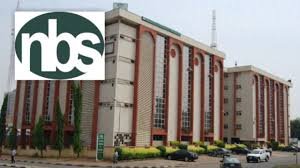Korede Abdullah in Lagos
Nigeria’s headline inflation slowed for the third consecutive month in June 2025, dropping to 22.22 per cent from 22.97 per cent in May, according to the latest Consumer Price Index (CPI) report released by the National Bureau of Statistics (NBS) on Wednesday.
The bureau said, “This shows that the headline inflation rate (year-on-year basis) decreased in June 2025 compared to the same month in the preceding year (i.e., June 2024).” Compared to June 2024, when inflation soared to 34.19 per cent, the current figure represents an 11.97 percentage point drop — partly due to a revised base year, November 2009.
However, despite the marginal relief in headline inflation, food inflation continues to squeeze household budgets. The report revealed that food inflation rose to 21.97 per cent in June, up from 21.14 per cent in May.
The NBS explained, “The increase can be attributed to the rate of increase in the average prices of Green Peas (Dried), Pepper (Fresh), Shrimps (white dried), Crayfish, Meat (Fresh), Tomatoes (Fresh), Plantain Flour, Ground Pepper, etc.”
Month-on-month, food inflation climbed by 3.25 per cent — significantly higher than the 2.19 per cent recorded in May, highlighting persistent pressures in the food supply chain.
Regionally, the data shows stark contrasts. States like Borno (47.40%), Ebonyi (30.62%), and Bayelsa (28.64%) reported the highest year-on-year food inflation, reflecting local market shocks and security challenges.
In contrast, Katsina (6.21%), Adamawa (10.90%), and Sokoto (15.25%) recorded the slowest increases. “On a month-on-month basis, however, June 2025 Food inflation was highest in Enugu (11.90%), Kwara (9.97%), and Rivers (9.88%) while Borno (-7.63%), Sokoto (-6.43%) and Bayelsa (-6.34%) recorded declines,” the NBS added.
The mixed inflation trends underline the delicate balancing act facing policymakers as they struggle to curb rising food costs despite easing general inflation.



